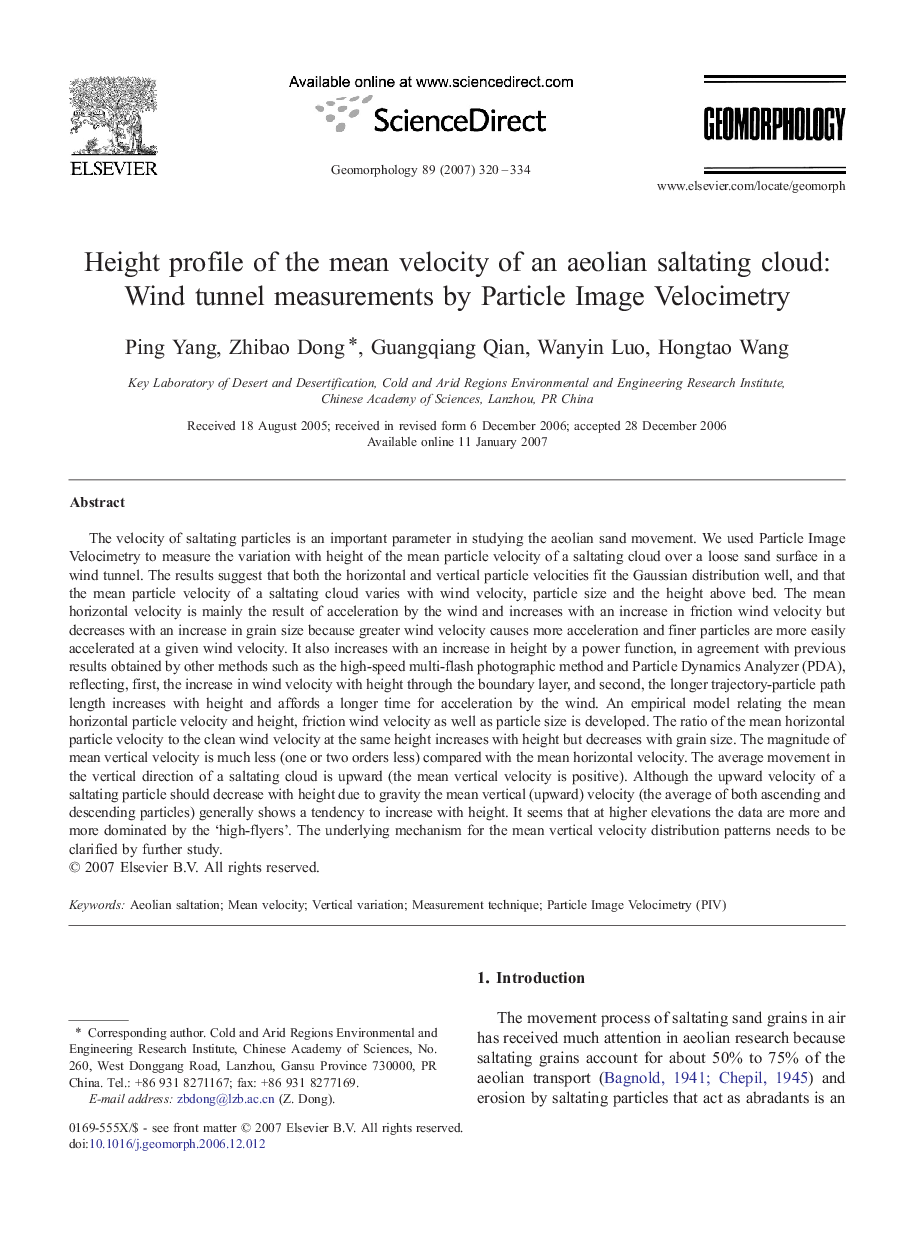| کد مقاله | کد نشریه | سال انتشار | مقاله انگلیسی | نسخه تمام متن |
|---|---|---|---|---|
| 4687186 | 1635574 | 2007 | 15 صفحه PDF | دانلود رایگان |

The velocity of saltating particles is an important parameter in studying the aeolian sand movement. We used Particle Image Velocimetry to measure the variation with height of the mean particle velocity of a saltating cloud over a loose sand surface in a wind tunnel. The results suggest that both the horizontal and vertical particle velocities fit the Gaussian distribution well, and that the mean particle velocity of a saltating cloud varies with wind velocity, particle size and the height above bed. The mean horizontal velocity is mainly the result of acceleration by the wind and increases with an increase in friction wind velocity but decreases with an increase in grain size because greater wind velocity causes more acceleration and finer particles are more easily accelerated at a given wind velocity. It also increases with an increase in height by a power function, in agreement with previous results obtained by other methods such as the high-speed multi-flash photographic method and Particle Dynamics Analyzer (PDA), reflecting, first, the increase in wind velocity with height through the boundary layer, and second, the longer trajectory-particle path length increases with height and affords a longer time for acceleration by the wind. An empirical model relating the mean horizontal particle velocity and height, friction wind velocity as well as particle size is developed. The ratio of the mean horizontal particle velocity to the clean wind velocity at the same height increases with height but decreases with grain size. The magnitude of mean vertical velocity is much less (one or two orders less) compared with the mean horizontal velocity. The average movement in the vertical direction of a saltating cloud is upward (the mean vertical velocity is positive). Although the upward velocity of a saltating particle should decrease with height due to gravity the mean vertical (upward) velocity (the average of both ascending and descending particles) generally shows a tendency to increase with height. It seems that at higher elevations the data are more and more dominated by the ‘high-flyers’. The underlying mechanism for the mean vertical velocity distribution patterns needs to be clarified by further study.
Journal: Geomorphology - Volume 89, Issues 3–4, 15 September 2007, Pages 320–334